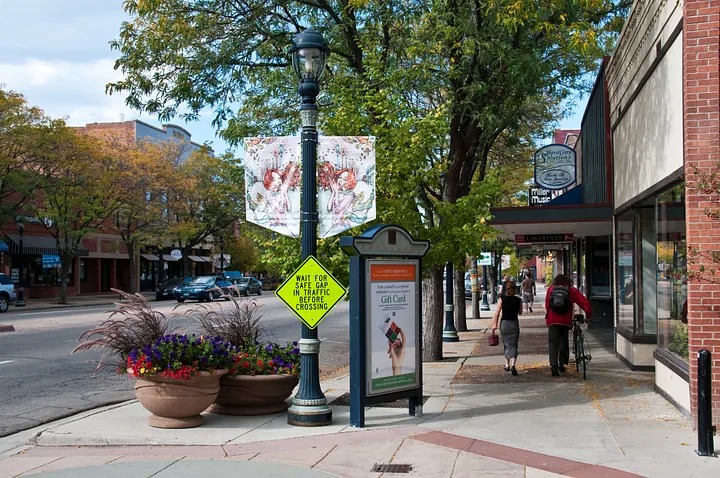Longmont, Colorado, USA
Maximizing utility rebates.
Project Type:
Community Engagement, Equity, Infrastructure and Utilities
At a Glance
In 2018, after approving a new rebate for food taxes, city officials consolidated and improved participation in their various rebate programs.
The new rebate application took just five minutes to complete, down from about 45 minutes for the previous energy rebate.
In 2020, 711 people applied for the CAReS-based support — a 286% increase from the year prior.
The team has added new items to the program, including waste management rebates and storm drainage fees. It’s also expanding eligibility and helping connect residents with other programs, such as a federal subsidy for broadband.
A Pain Point for Longmont’s Seniors
At a water aerobics class in Longmont, CO, a longtime resident shared with her instructor that she was struggling to pay her utility bills. In addition to teaching the class, Sandra Seader is the city’s assistant city manager and was able to point the woman to the Longmont City Assistance and Rebate System program for financial assistance. Known locally as Longmont CAReS, the program centralizes the city’s many rebate and assistance programs for the city’s most vulnerable residents, many of whom are seniors.

Like in many growing mid-size cities, life in Longmont has become more expensive in recent years. For residents on fixed and limited incomes, even small increases in utility bills were becoming crushing.
“Our seniors that are on fixed incomes feel it every time we raise utility rates,” Seader said. “I’m not saying a $300 rebate helps somebody stay in their home, but it certainly bridges that gap of the increased prices and increased cost of living.”
That’s why Longmont worked to consolidate a variety of rebates — helping offset increases in food prices, energy and water bills, and broadband — under the program. In designing the program, they utilized a race equity tool that made community engagement a priority from the onset.
“She was just so grateful to have an opportunity to offset the increases and she told everybody else in the class.”
Rebates Needed to Be Easier
Longmont has offered residents rebates to help with energy bills and water bills for decades. In 2018, when the city council approved a new rebate for food taxes after hearing from residents that groceries were getting more expensive, city officials took a step back and looked at how to consolidate and improve participation in their various rebate programs.
Becky Doyle, now the executive director of the consolidated services team that oversees Longmont CAReS, took a data-led approach to evaluating the existing programs, and noticed a glaring problem: Even though the qualification requirements for their existing energy and water rebates were similar, 1,800 people were enrolled in the energy program–and only about 40 in the water one.
Implementing the programs without engaging the community hadn’t been enough. “There wasn’t a whole lot of outreach,” Seader explains. “You kind of had to know about the rebates.”

The race equity tool officials used as they undertook the rebate consolidation led to community conversations and focus groups to understand how to reduce barriers for qualified individuals.
The equity lens led to the team paying community members for their time in the focus group and to offering child care to ensure parents could participate. What came out of the listening sessions was not surprising, but it was affirming: People wanted the process to be simple, and they didn’t want to jump through too many hoops to qualify.
“It’s the first program that I had worked on where equity was conscientiously made an integral part of the design.”
The Solution
Doyle’s team used that information to create a one-page form. Rather than require applicants to submit income details, which can be cumbersome, the form simply required proof of existing eligibility for a needs-based government program such as Medicaid or the U.S. Department of Agriculture’s free school lunch program.
The resulting application took just five minutes to complete, down from about 45 minutes for the previous one for the energy rebate program.
In 2019, 184 residents applied for assistance under the newly consolidated Longmont City Assistance and Rebate System, or CAReS, program, a significant increase from the previous number of people participating in the water rebate program, but officials saw still more room for improvement.
With support from The Behavioral Insights Team (BIT), an expert partner of What Works Cities, Longmont designed a trial to see whether they could increase applications and participation. They set up three control groups: one simply received their utility bill, another received an additional flier about CAReS, and the third received the flier as well as a CAReS application. They found an uptick in applications among the two groups that received the flier, and little difference based on whether an application was included.
The City’s approach to data is guided by evaluation but also highly entrepreneurial: when the City’s Community Development Department couldn’t get access to county-level data on social services to help inform support for the unhoused during COVID, they worked in concert with local entities to conduct counts and generate their own datasets to determine how to best meet the needs of that community. The City also shifted to a “COVID Dashboard” with specific metrics that would provide the information needed to quickly identify priorities and areas of need.
“That was really helpful information for us because this year when we went to implement results of the trial, we were able to put a flier in all the utility bills in both English and Spanish.”
“We knew we still weren’t reaching as many people as we could,”
The Results
In 2020, 711 people applied for the CAReS-based support — a 286% increase from the year prior — and received an average rebate of $387, enough to cover the average Longmont utility bill for a little over two months. The team continues to track applications to monitor the success of its efforts and expand the program’s reach. The CAReS program also became a useful way to identify residents for additional help during the pandemic.
Officials sent $25 vouchers to CAReS recipients, which could be redeemed at local restaurants — a way to support businesses that were struggling during the crisis while also providing assistance to residents. Having a way to reach that population and easily deliver help is a key benefit of having a centralized program, Seader notes.
The total amount of money disseminated in rebates — $275,415 in 2020 — has had a demonstrable impact on the level of past due utility bills, a metric the team uses to track the effectiveness of the program. There are fewer past due bills as a result of the assistance—the number of residential accounts past due by more than 30 days reduced by 35%.
“We did a lot of analysis and debate about what is the problem we’re trying to solve in COVID and how we can best help households,” said Doyle. “The thing that we realized we had the most control over was utility bills and providing utility assistance.”
In 2021, the team added new items to the program, including rebates for waste management and storm drainage fees. It’s also expanding eligibility and helping connect residents with other programs, such as a federal subsidy for broadband.
“We continue to enhance the program, expanding access and opportunities for residents to benefit from city services,” Doyle said. “There’s definitely more to do.”
For more on Longmont’s data journey, listen to this episode of GovLov podcast.